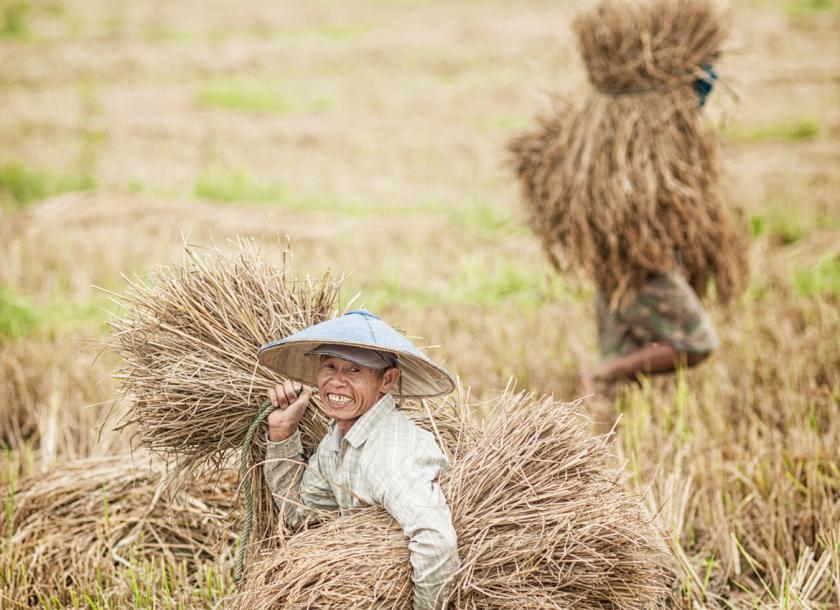“We (FAO country programme) are focused on … food security, nutrition, and food safety,” said Xiaojie Fan, FAO’s representative in Myanmar, at the celebration of the organization’s 40th anniversary in Myanmar held in Yangon last Friday.
She said FAO also wants to help Myanmar “strengthen the governance and sustainable management of land, forest, and natural resources; and enhancement of more resilience of rural communities, also local farmers' resilience in climate change as well as transboundary animal diseases.”
Myanmar is a country most affected by climate change and has suffered from extreme weather such as cyclones, floods, and droughts for the last three decades.
During a ceremony to celebrate the World Food Day held in Nay Pyi Taw on October 16, Vice President U Henry Van Thio said Myanmar's food security is facing various challenges, including climate change and natural disasters.
At the launch of the Myanmar Action Plan on Disaster Risk Reduction 2017, earlier in the month, the vice president said the country’s average annual loss from natural disasters was 3 percent of the GDP.
U Yaw Shu Eike Htan, an executive of the New Generation Social Development Organization in Madupi in Chin State, said loss in crops during a disaster is one of the main issues for cultivators in the area.
“Most of the farms are along the hillside. The main causes of loss of crops in farms in our area are landslides and washed away soil during heavy rain. Some paddy fields were also affected by heavy rains this year,” said U Yaw Shu Eike Htan who collaborated in food security activities of local and international non-government organizations.
Dr. Maung Mar, an agricultural technician said preparation for disasters is important to reduce losses among farmers as well as in agriculture sector development.
“We cannot prevent hazards. But if we can get early warning, farmers can mitigate such hazards by harvesting early and keep the crops in [a] secure place,” he said.
Xiaojie Fan said that the disaster risk reduction task force and drone mapping unit were established in August through the collaboration of FAO and government ministries with the aim of enhancing disaster preparedness and response activities in the country.
FAO Myanmar in collaboration with the Myanmar Aerospace Engineering University has used drones for post-disaster damage assessment in Myanmar since 2016.
In July, FAO collaborated with the Ministry of Social Welfare, Relief and Resettlement and Ministry of Agriculture, Livestock, and Irrigation, to map out flooded areas in Magwe Region.
The information collected by the Drone Mapping Team were used by the Department of Relief and Resettlement to better understand flood vulnerability, locate affected communities and enhance future collaborative mapping projects.
Source: Myanmar Times | 31 October 2017














